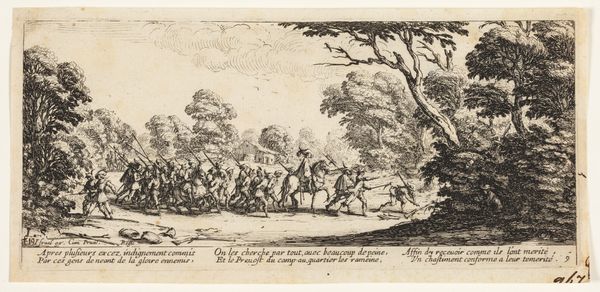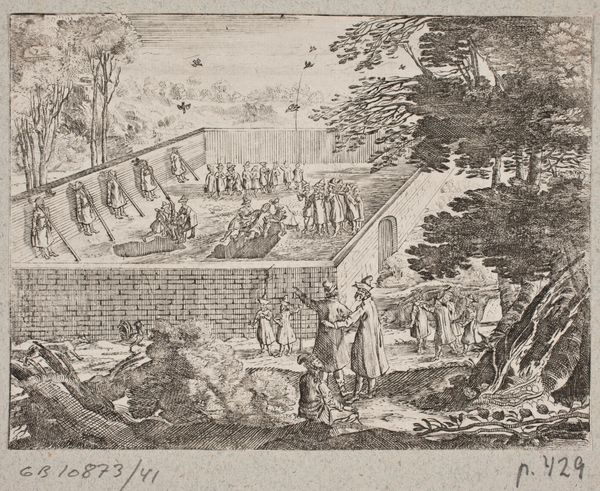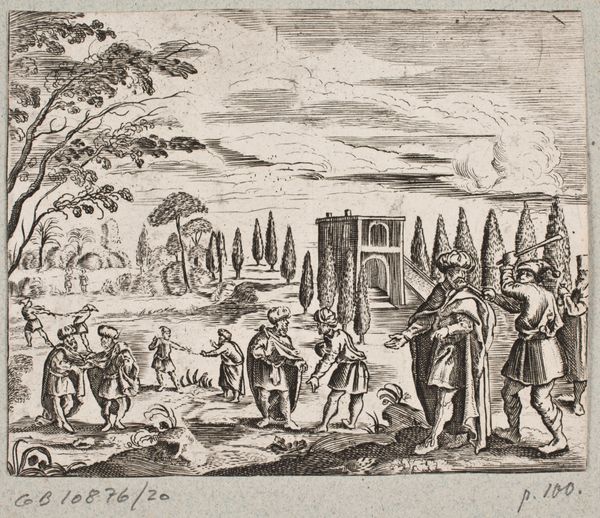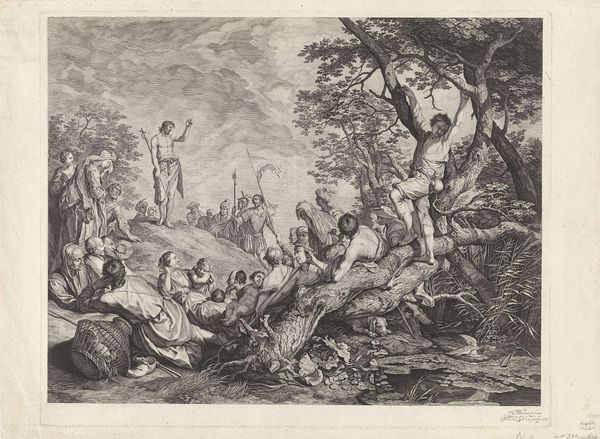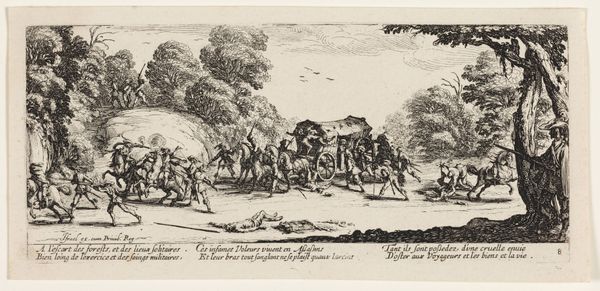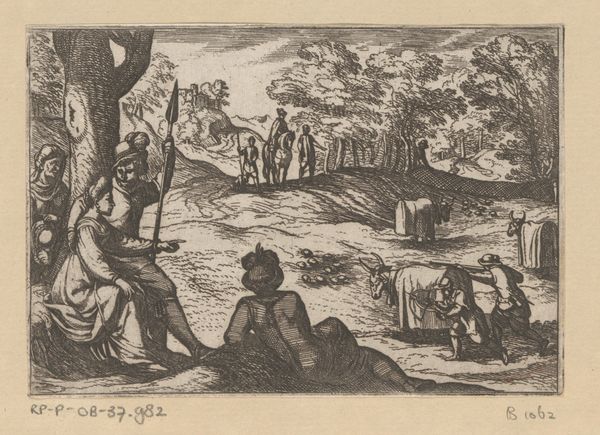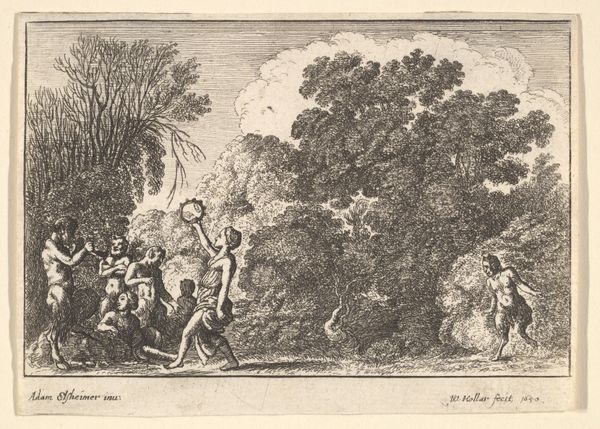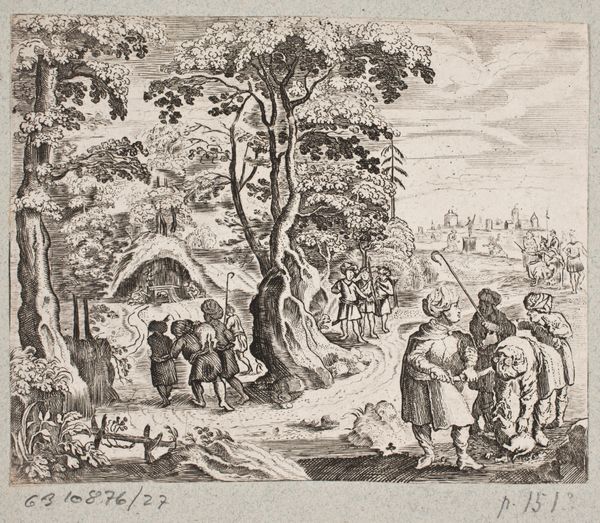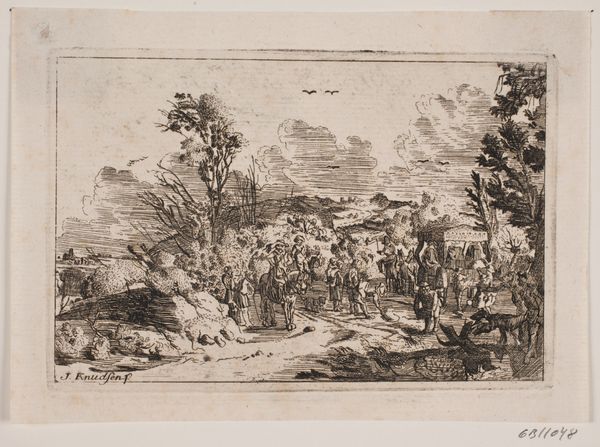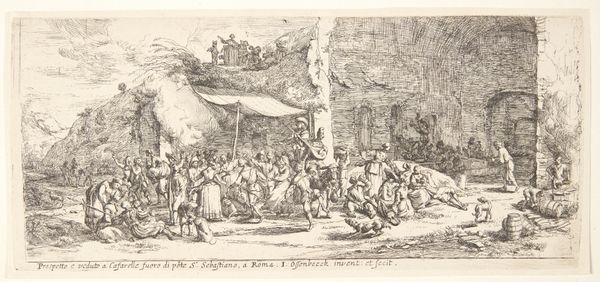![Illustration til Adam Olearius, “Persianischer Rosenthal von einem Sinnreichen Poeten Schich Saadi […]”, Schleswig 1660 by Christian Rothgiesser](/_next/image?url=https%3A%2F%2Fd2w8kbdekdi1gv.cloudfront.net%2FeyJidWNrZXQiOiAiYXJ0ZXJhLWltYWdlcy1idWNrZXQiLCAia2V5IjogImFydHdvcmtzLzk1NWMzNDQ5LTIwZDktNGU2MC1hNmM5LTNmODJiMzAzMDdlMC85NTVjMzQ0OS0yMGQ5LTRlNjAtYTZjOS0zZjgyYjMwMzA3ZTBfZnVsbC5qcGciLCAiZWRpdHMiOiB7InJlc2l6ZSI6IHsid2lkdGgiOiAxOTIwLCAiaGVpZ2h0IjogMTkyMCwgImZpdCI6ICJpbnNpZGUifX19&w=3840&q=75)
Illustration til Adam Olearius, “Persianischer Rosenthal von einem Sinnreichen Poeten Schich Saadi […]”, Schleswig 1660 1660
0:00
0:00
print, engraving
#
narrative-art
#
baroque
# print
#
landscape
#
engraving
Dimensions: 104 mm (height) x 134 mm (width) (bladmaal)
Curator: Christian Rothgiesser's 1660 engraving, titled "Illustration til Adam Olearius, Persianischer Rosenthal...", immediately draws the eye. It's part of a book, a glimpse into another world filtered through 17th-century European eyes. Editor: It feels so small and yet bustling! I’m struck by how detailed it is for what I assume is a book illustration. There’s a real sense of depth created by those tiny etched lines. You almost feel the dust in the air of that exotic landscape. Curator: Indeed, the materiality of printmaking plays a significant role here. Think about the labor invested, the meticulous process of engraving each line into the metal plate to mass produce images and stories. And considering its place in Olearius’s book, a travelogue, it shaped European perceptions of Persia, of the “Orient,” influencing trade and cultural exchange. Editor: Right. There's something incredibly romantic and yet almost anthropological about these early illustrations. The camels, the way the figures are dressed...it's like Rothgiesser is inviting us to step right into a dream, or maybe someone else's dream of Persia. Curator: And isn't that the beauty of narrative art? He transforms observations into a sort of stylized reality, capturing not just the landscape, but an atmosphere—that specific longing for the unknown that characterized much of the Baroque era. Editor: Absolutely. I hadn't quite connected it to Baroque romanticism, but that feels right. But how much is observed fact and how much is Rothgiesser's artistic interpretation, a European filter shaping the "facts?" Curator: It’s hard to say definitively. This little engraving embodies a lot of historical cross-currents, not just in the content depicted, but the materials employed in its making, its very existence, shaped a globalizing world. Editor: Looking at it now, I think the interplay of observation and interpretation is what fascinates me most. Curator: It's a window into both the East and the West, wouldn't you agree? An artifact with cultural and material reverberations echoing still.
Comments
No comments
Be the first to comment and join the conversation on the ultimate creative platform.
